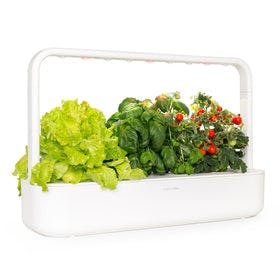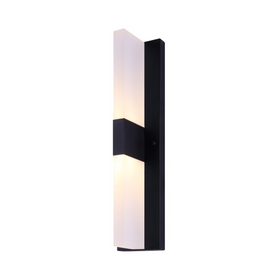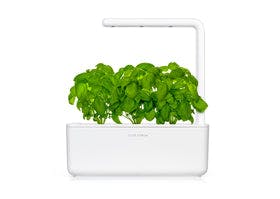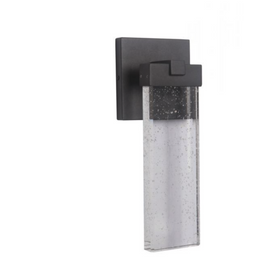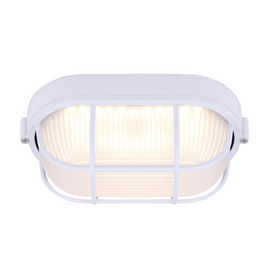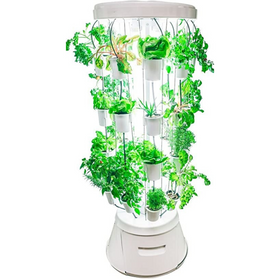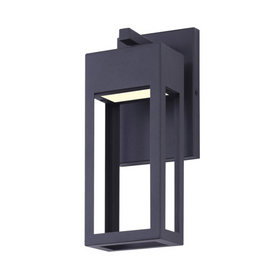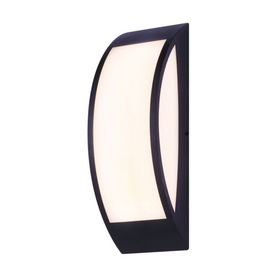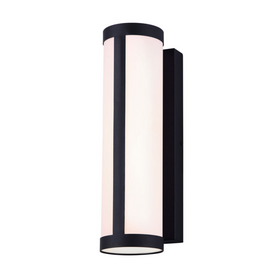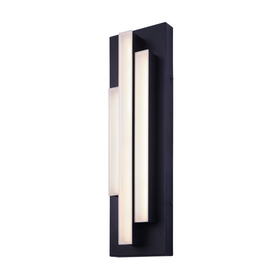
Growing Your Own Food Year-Round: Your Guide to Fall Gardening
Last Updated: Apr 11, 2025Fall may be harvest season for popular crops like apples and squash, but did you know it’s also the perfect time to plant things like root vegetables, trees, and flowers? No matter how cold, snowy, mild, or dry your zone is, there is always a way to grow your food.
Cloches, greenhouses, and cold frames will enable you to freshen your winter and spring meals with vitamin-rich produce infused with your family’s love and care.
Table of Contents
- What Food Can You Grow in the Fall?
- What Vegetables Can You Grow in the Fall?
- What Trees Can You Plant in the Fall?
- What Flowers Can You Plant in the Fall?
- Duplicate the Flowers You Already Have Planted
- Tools for Successful Fall Gardening
- Check Your Local Frost Dates
- Start Growing Your Own Vitamin Rich Organic Food

What Food Can You Grow in the Fall?
Garlic and onion serve as the base for just about any savory dish from hearty soup to cheesy pasta dishes. More than just great flavor, they contain all kinds of healthy vitamins like manganese, biotin, fiber, potassium, selenium, and vitamins B6 and C too! And they’re super easy to grow, even for beginner gardeners!
What Vegetables Can You Grow in the Fall?
Fall is the best time to plant root vegetables, including onion, garlic, turnips, potatoes, and radish. Plant in early fall, at least a week before your first frost, cover with a thick layer of mulch, and nature will do the rest.
The mulch will keep the soil warmer to prevent plants from freezing, giving them a quicker start in the spring. The mulch can be mixed into the ground to prepare the soil for the next rotation!
Those healthy leafy greens, including lettuce, spinach, kale, and collard greens, thrive in cooler temperatures too. If planted before your first frost, you’ll have fresh garden greens for Thanksgiving.
Those in cooler climates, a cloche, cold frame, or greenhouse will help keep plants safe from snow and ice.
What Trees Can You Plant in the Fall?
As the summer heat passes and regular precipitation finds its way back into the forecast, fall is ideal for planting trees.
Plant trees before the soil freezes to allow roots to establish themselves. And remember, new trees need lots of water! If nature isn’t providing enough, daily manual watering for the first month will help newly planted trees thrive.
Choose your trees and planting location wisely, keeping microclimates and lifetime growth in mind. Trees are not so easily moved, so be sure not to plant them too close to buildings and driveways where they may cause damage.
For more information about planting trees, visit the USDA’s Backyard Conservation page.
What Flowers Can You Plant in the Fall?
Everyone loves spring flowers. From sunny yellow daffodils to sweet pink peonies, nothing says spring quite like pretty pops of color showing up around the house and yard as the weather warms.
With a little forethought, you can look forward to watching the first signs of spring from your front porch.
Most flowers grown from a bulb can be planted in the fall for a spring show. To plant your bulbs, prepare your soil (amend with compost and add rocks as needed), plant according to packaging, and cover with soil. Bulbs can be purchased from a variety of sources online and at your local garden center.
Duplicate the Flowers You Already Have Planted
If you already have bulbs planted, take advantage of the opportunity to multiply your flowers and grow your gardens.
In fall, cut flowers back to 1-2” inches above the soil and carefully dig the bulb up. You should be able to see two or more bulbs fused. Take a deep breath and slowly separate the bulbs, taking care to untangle and protect roots. Replant each bulb separately and cover it with soil and compost.

Tools for Successful Fall Gardening
The biggest challenge to fall and winter gardens are keeping roots warm and harsh winter storms from damaging leaves and produce. A few rudimentary tools will aid you in protecting your precious plants.
Mulch
One of the easiest and cheapest methods for protecting roots from the cold is mulch. Mulch can be found all around your home in the form of grass clippings, straw, leaves, compost, and bark or can be purchased at your local home improvement store.
While soil temperatures are still above freezing, lay mulch around individual plants and over your entire garden bed in a layer four to 8 inches thick. For harsher climates, a covering may still be necessary to prevent snow and ice from burying plants.
Cold Frames and Cloches
Us northerners generally need to do a little more preparation to protect plants from the elements. Cold frames and cloches provide shelter for your plants and create a small greenhouse environment to help them get through winter storms.
Cloches and cold frames can be purchased online, at your local gardening center, or built using reclaimed materials and plastic sheeting.

A greenhouse is just a big cloche and opens the doors wide for fall and winter gardening. Tables, shelves, and hanging pots will help you take advantage of every corner of your greenhouse, giving you the power to feed your whole neighborhood.
Heat lamps will help you regulate the greenhouse temperature and provide an excellent space for starting spring seedlings. Check out this guide to building your own greenhouse by The University of Georgia.
Laura Bourland
Laura grew up in the California suburbs, far removed from environmentalism, but nature always has a way. She uprooted her life in 2015, moving to the countryside of Washington to live a more sustainable and simple life on 12 acres. She and her fiancee are learning on the job as they attempt everything from gardening and natural pest control to eco-friendly building and home improvement.


